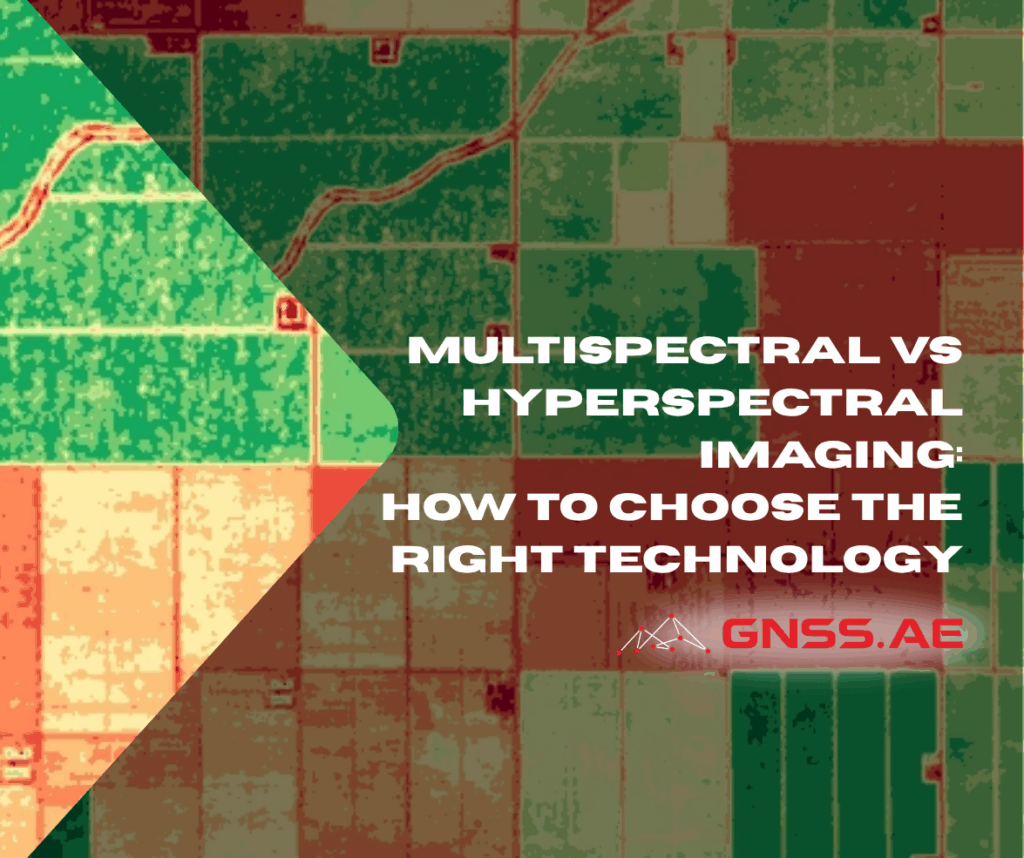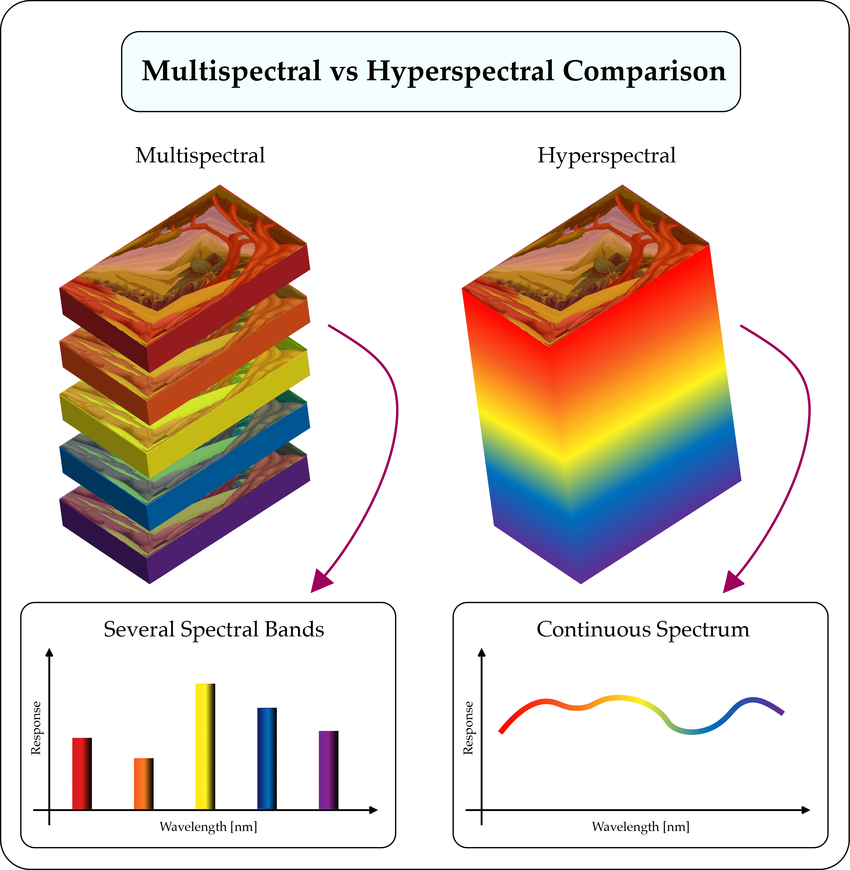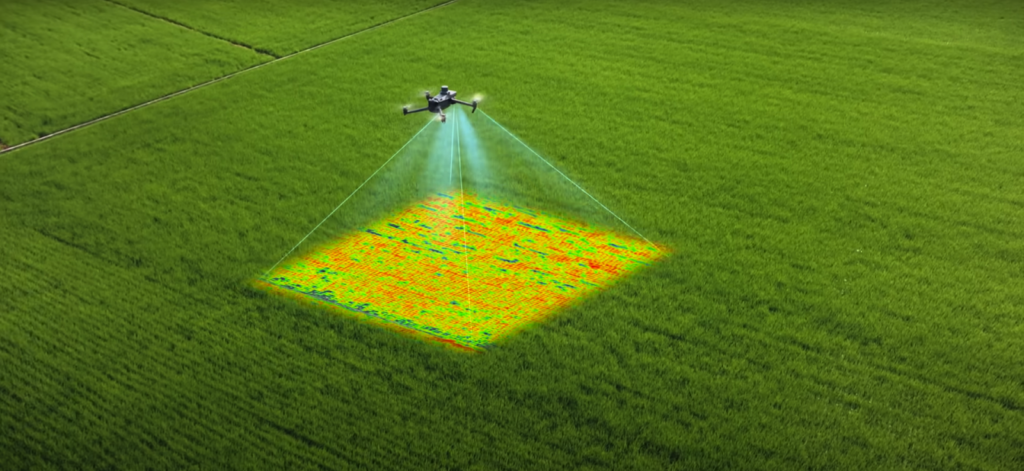
The world of spectral imaging has revolutionized countless industries, from precision agriculture to environmental monitoring. At the heart of this technological revolution lie two powerful approaches: multispectral and hyperspectral imaging. Understanding the differences between these technologies is crucial for making informed decisions about which solution best fits your specific needs.
The fundamental distinction between multispectral imaging (MSI) and hyperspectral imaging (HSI) lies in their approach to capturing electromagnetic spectrum data. This difference impacts everything from data complexity to practical applications.

Multispectral imaging operates with a focused approach, typically capturing 5-10 spectral bands across selected portions of the electromagnetic spectrum. These bands are strategically chosen to include RGB (red, green, blue) channels along with several infrared bands, providing essential information while maintaining manageable data volumes.
Hyperspectral imaging takes a comprehensive approach, capturing hundreds or even thousands of narrow spectral bands, each typically 10-20 nanometers wide. This extensive coverage creates a detailed spectral fingerprint for every pixel in the image, enabling precise material identification and analysis.
Each technology makes specific trade-offs between spectral and spatial resolution. Hyperspectral systems excel in spectral precision, distinguishing between very similar materials based on subtle spectral differences. However, this spectral richness often comes at the cost of spatial resolution.
Multispectral systems typically offer higher spatial resolution while sacrificing some spectral detail. This balance makes them particularly effective for applications requiring clear geographical detail and rapid analysis.
The data processing landscape differs dramatically between these technologies. Hyperspectral data demands sophisticated computational resources and specialized software for analysis. The sheer volume of information requires advanced algorithms and expert interpretation to extract meaningful insights.
Multispectral data processing is considerably more straightforward, with numerous user-friendly software options available. This accessibility enables faster analysis and real-time decision-making, making it suitable for time-sensitive applications.
Budget constraints often play a decisive role in technology selection. Hyperspectral systems require significant investment not only in sensors but also in processing infrastructure and specialized expertise. The complexity of data analysis adds ongoing operational costs.
Multispectral imaging offers a cost-effective solution that delivers valuable insights without the substantial resource requirements. This affordability makes it accessible to a broader range of users and applications.
Atmospheric conditions affect both technologies differently. Hyperspectral imaging requires careful calibration and controlled conditions for optimal performance, making it more suitable for specific scientific applications or controlled environments.
Multispectral imaging demonstrates greater resilience to atmospheric interference and environmental variations, allowing for more flexible deployment across diverse conditions and locations.
Modern agriculture increasingly relies on spectral imaging for precision farming solutions. Multispectral technology has become the backbone of agricultural monitoring, enabling farmers to assess crop health, identify pest infestations, optimize irrigation systems, and implement variable-rate fertilization strategies.
The technology’s ability to distinguish between healthy and stressed vegetation, different crop types, and soil conditions makes it invaluable for sustainable land management practices. Real-time multispectral data helps farmers make informed decisions that improve yields while reducing resource waste.

Environmental scientists utilize both technologies for ecosystem monitoring and conservation efforts. Multispectral imaging excels in tracking land use changes, monitoring deforestation, and assessing the health of various ecosystems including forests and wetlands.
Hyperspectral imaging finds its niche in detailed environmental studies, such as water quality assessment and pollution monitoring. The technology’s ability to identify specific materials and chemicals makes it valuable for environmental research applications.
Natural disaster response heavily depends on rapid, accurate information. Multispectral imaging provides crucial support during emergency situations, helping assess damage from earthquakes, floods, hurricanes, and other catastrophic events.
The technology’s ability to deliver near-real-time data from remote and inaccessible areas makes it indispensable for coordinating disaster response efforts and allocating resources effectively. Recent applications have demonstrated its value in analyzing and responding to various natural disasters.
Forest management has been transformed by spectral imaging technologies. Multispectral sensors enable accurate tree species identification, forest health assessment, and deforestation monitoring. The technology plays a crucial role in sustainable forestry practices.
Wildfire prevention benefits significantly from spectral imaging’s ability to detect early signs of vegetation stress and identify high-risk areas. By monitoring changes in plant health and moisture content, forest managers can implement preventive measures more effectively.
While multispectral imaging provides valuable geological information, hyperspectral technology truly excels in mineral exploration and geological mapping. The technology’s detailed spectral analysis capabilities enable precise material identification and quantification, making it invaluable for mining and geological research.
Selecting between multispectral and hyperspectral imaging requires careful consideration of your specific needs, resources, and objectives. Consider whether your application demands ultra-precise material identification or if broader spectral information suffices for your goals.
Evaluate your available resources, including budget, processing capabilities, and technical expertise. Consider the time sensitivity of your applications and whether real-time analysis is crucial for your operations.
The decision often comes down to balancing operational efficiency against spectral precision. If your applications require detailed material analysis and you have the resources for complex data processing, hyperspectral imaging may be the optimal choice.
For most practical applications, multispectral imaging offers an excellent balance of capability and efficiency. Its combination of useful spectral information, higher spatial resolution, and operational simplicity makes it the preferred choice for many industries.
The spectral imaging landscape continues to evolve rapidly. Hyperspectral technology is becoming more accessible as sensors become smaller and more affordable, while data analysis techniques become more sophisticated and user-friendly.
Multispectral imaging is expanding its capabilities through increased spectral coverage and integration with other remote sensing technologies. This evolution promises to deliver even more detailed and comprehensive insights while maintaining the technology’s practical advantages.
Both multispectral and hyperspectral imaging technologies offer unique advantages for different applications. Multispectral imaging provides a practical, cost-effective solution that delivers valuable insights for most commercial and research applications. Its balance of spectral information, spatial resolution, and operational efficiency makes it an excellent choice for agriculture, environmental monitoring, disaster management, and forestry applications.
Hyperspectral imaging remains the technology of choice for applications requiring precise material identification and detailed spectral analysis. While it demands greater resources and expertise, it provides unparalleled spectral detail for specialized scientific and research applications.
The key to making the right choice lies in assessing your specific requirements, available resources, and long-term objectives. By understanding the strengths and limitations of each technology, you can make an informed decision that delivers optimal results for your particular use case.